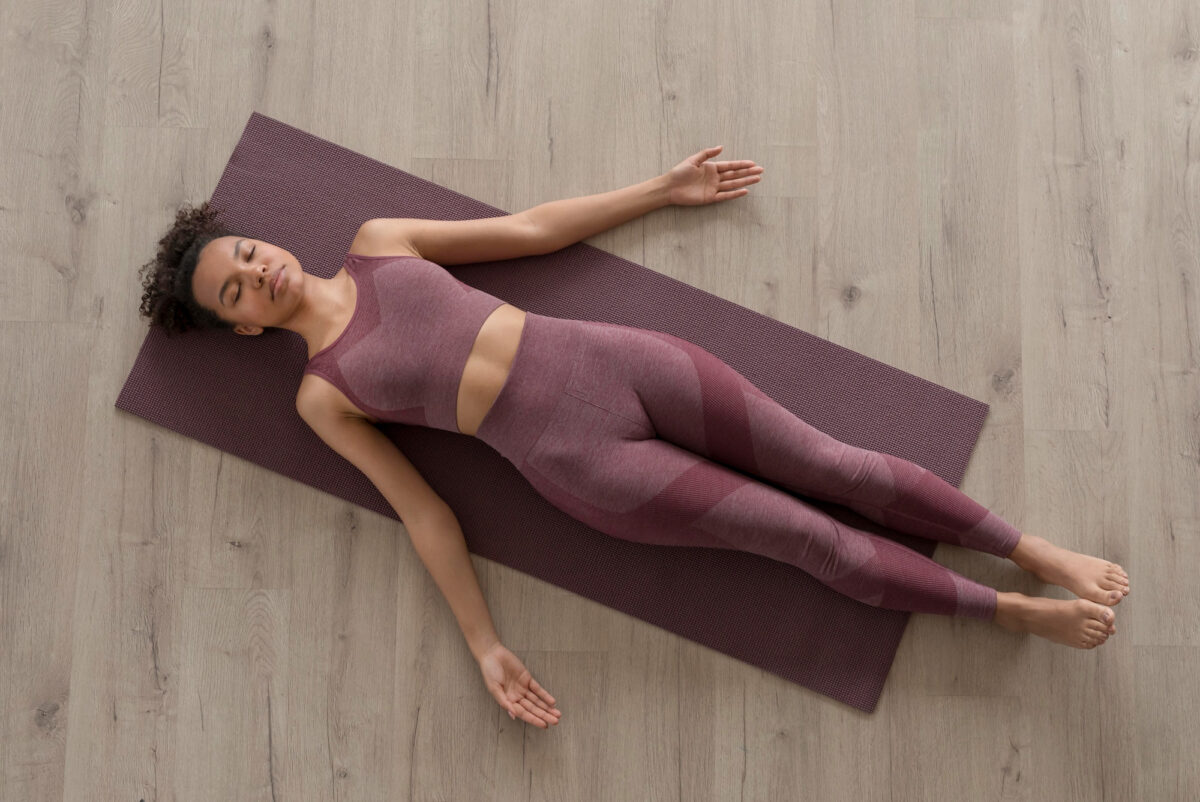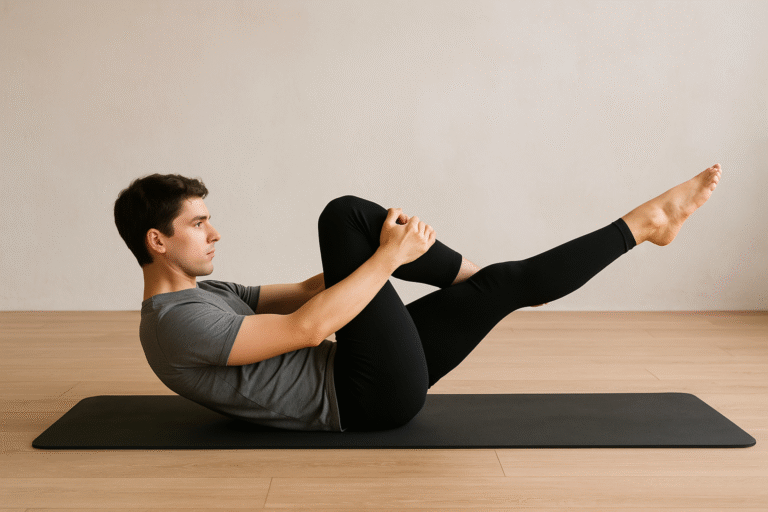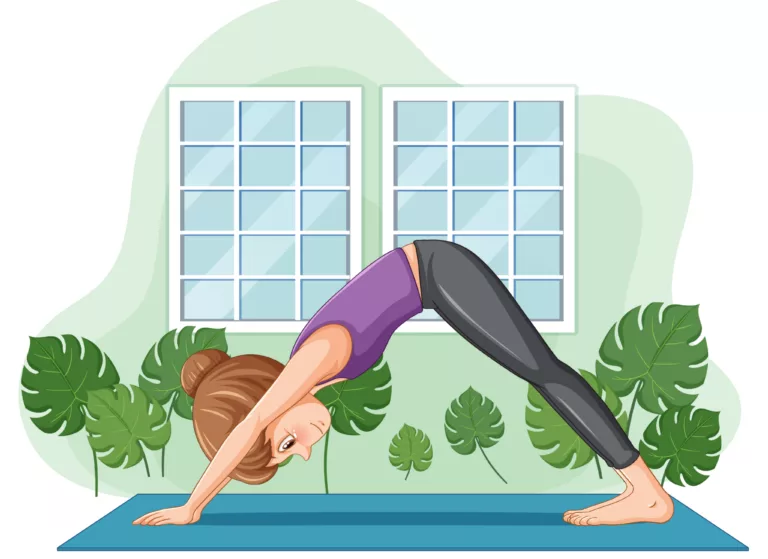Let me tell you the truth right away
I’ve woken up with a bit of drool on my mat.
During savasana.
And I’m not talking about a three-second nap: I mean full-on snoring like a dormouse while everyone else around me was in a state of “deep awareness.”
If you also fall asleep as soon as you lie on your back at the end of class, know that you’re not alone.
And no, you’re not broken.
Let’s break down what savasana is supposed to be, what actually happens, and whether falling asleep every time means you’re doing yoga wrong… or maybe a little too well.
Savasana: a pose called “corpse”… and that already says a lot
The official name is “savasana,” but we could easily call it the “spiritual coma pose.”
Theoretically, it’s the moment of maximum conscious relaxation.
In practice? It’s that point where most of us — especially after a long day or a killer asana sequence — shut down like a candle in the rain.
Your body is fully relaxed.
Breathing is slow.
Dim lighting.
A comfy mat under your back.
Warm muscles.
Silence.
And maybe a soft voice whispering: “Let it all go…”
Well of course I’m letting it go! I’m even letting go of consciousness.
But is it bad to fall asleep during savasana?
It depends on what you’re looking for in yoga.
If it’s your way to unload stress, slow your mind, and enjoy a moment of peace… then falling asleep might simply mean your nervous system got the memo.
Mission accomplished: you relaxed so much you entered “no talking, no thinking, no reacting” mode.
Which, by the way, is exactly what a lot of people aim for in mindfulness.
The issue is that savasana isn’t meant to be a nap.
Technically, it should be a state of alert relaxation.
A kind of “waking sleep.”
A moment where you’re conscious but detached. Receptive but not active.
And if you’re fully asleep… you miss it.
You miss that suspended space between thought and silence that can be surprisingly enlightening.
What happens in the brain during savasana?
Now for the nerdy (but fascinating) part.
When you’re in savasana, your brainwaves shift from beta (active wakefulness) to alpha (relaxed awareness).
If your body is particularly tired, you might slip into theta — the zone of lucid dreams, creativity, and unconscious processing.
The problem? Go further and you enter delta.
Those are the brainwaves of deep sleep.
So yes: if you’re snoring, you’ve passed the threshold and entered full-on hibernation mode.
It’s not a big deal. But it’s also not the purpose of the pose.
Why does it always happen to me? Am I normal?
Yes, you’re normal.
No, you’re not weak.
And no, you’re not a disgrace to the yoga community.
It happens more often than you think.
We live in a world that keeps us “on” 24/7.
Notifications. Deadlines. Coffee at 5 p.m.
Then you enter a quiet room, no stimuli, deep breaths, calm body… and your brain goes, “Thanks, I’m shutting down now.”
Your body might just need to recover.
Maybe you sleep poorly.
Maybe you’re stressed.
Maybe you train hard.
Or maybe you just finished a power flow class that turned your legs into Jell-O.
In those cases, drifting into a mini-nap isn’t a failure.
It’s a symptom.
Okay, but what if I want to stay awake?
It’s valid to want the full conscious savasana experience.
Here are a few tips that can help:
- Don’t cover yourself too much. If you’re too warm or cozy, sleep comes faster.
- Keep your eyes slightly open. A sliver of light can help you stay awake but relaxed.
- Focus on listening. Tune into ambient sounds — soft music, the teacher’s voice, even far-off noise.
- Breathe while counting. Start from 30 and count backwards. If you lose track… guess what? You were dozing off.
- Visualize your body. Mentally scan from head to toe. It’s a presence exercise, not just a relaxation one.
- Avoid lying completely flat if you’re exhausted. Sit with your back against the wall or recline slightly.
The real purpose of savasana: beyond relaxation
Savasana is not just a final reward.
It’s a crucial phase of integration.
You’ve just moved energy, joints, breath, attention.
Now you let everything settle.
It’s the moment your body absorbs the work you’ve done — and your mind gets to “record” the new state.
In this sense, even trying to stay present is already a powerful practice.
You don’t need to do it “perfectly.”
You just need to be there.
What yogic tradition says about savasana (and why it’s not just nap time)
In classical yogic tradition, savasana isn’t just relaxation — it’s considered a deep spiritual posture, almost on the same level as seated meditation.
According to ancient texts, it’s the moment where you can experience a formless state of awareness — observing yourself without attachment, ego, or external input.
In many schools, it’s even seen as one of the hardest poses, precisely because it requires total mental presence in a completely still body.
Which sounds strange, since from the outside it looks like the “easiest” part of class.
But try staying still, awake, and aware for 10 minutes after an hour of vinyasa.
It’s not quite like sipping a frappé on the beach.
Understanding this can help you give more weight to this final phase — even if your body just wants to pass out.
It’s not an “extra.”
It’s part of the practice.
How to tell if you’re using savasana to escape stress (rather than integrate)
Here’s a question worth asking: are you choosing savasana or are you collapsing into it?
A lot of practitioners (especially those with high-stress lifestyles) end up seeing savasana as the only time they shut down completely.
But if this happens every single time — and only on the mat — you might be developing a “sudden shutdown dependency.”
Instead of using the practice to build awareness, you use it to turn everything off.
It’s not wrong — we all need to unplug — but it might be a sign of chronic mental overload that needs attention outside the yoga studio too.
Ask yourself:
- Can you relax at other times in the day?
- Do you need physical effort to “earn” rest?
- Do you feel guilty being still unless it’s inside a class?
If the answer is yes… then savasana isn’t the issue.
It’s the mirror.
The difference between relaxing and disconnecting: here’s what to aim for
Savasana isn’t just “chilling out.”
The key is staying connected.
True relaxation means letting go of tension while keeping a conscious thread with what’s happening inside and out.
Disconnection means switching everything off — body, breath, mind.
It’s a soft blackout — but still a blackout.
Training the ability to remain present in stillness can improve your sleep, your focus, and how you respond to stress.
Put simply: if you can stay awake in savasana, you can resist firing off that passive-aggressive email reply to your boss.
What to do right after savasana: the part most people skip
Spoiler: you’re not supposed to jump up and run out of the studio.
The moment right after savasana is like the “aftertaste” of the whole class. That’s when you notice what’s really going on:
- How does your body feel?
- What’s different from when you started?
- Where do you feel more space, silence, or lightness?
Many teachers will invite you to “gently move your fingers” or “roll to one side.”
This helps reconnect body and mind gently — like waking up from a lucid dream.
Take 30 extra seconds before getting up and jumping into your next task.
That moment is just as valuable as savasana itself.
Conclusion
Falling asleep in savasana every time doesn’t make you less of a yogi.
It might just mean you need more rest.
Maybe it’s a sign to slow down in life — not just on the mat.
And maybe… it’s simply your body saying, “Thanks for listening.”
Sure, try to stay awake sometimes — there’s something profound in conscious stillness.
But if today your savasana lasted five seconds and then you went straight to Narnia… that’s okay too.
Breathe. Smile.
And maybe bring an extra towel. Just in case. 😴🧘🏻♂️
FAQs
Can I do savasana on an empty stomach, or should I eat something first?
It’s best to be slightly empty or at least not fresh off a heavy meal.
If you just ate, your digestive system is active and can interfere with the lightness you’re aiming for.
On the other hand, if your stomach’s been empty for hours, you might feel weak or jittery.
A light snack 1–2 hours before class can be the sweet spot — especially if you practice in the morning.
What’s the best time of day to practice savasana?
There’s no universal “best time,” but the effects vary:
- Morning: improves focus and mental clarity, gets you ready for the day
- Afternoon: great for releasing tension without feeling heavy
- Evening: can help with sleep, but more likely to send you straight to nap-town
If your goal is to stay alert, avoid doing full-length savasana late at night — or shorten it a bit.
How long can you stay awake in savasana without falling asleep?
It depends on how trained you are in passive presence — sounds like an oxymoron, but that’s the whole point.
Most people can stay in relaxed awareness for about 5–7 minutes before drifting off.
With regular practice, you can stretch that to 10–15 minutes — but it’s a skill you build over time, like a muscle.
What other factors might make you sleepy during savasana (besides fatigue and warmth)?
Here are a few less obvious ones:
- Music that’s too repetitive or hypnotic: the brain slips into lullaby mode
- Lighting that’s too dim or pitch dark: full darkness can trigger melatonin
- Neck position too low or too high: messes with posture awareness and promotes disconnection
- Breathing too slow or passive: if you lose track of mindful breath, it’s easy to slide into sleep
- Your usual bedtime routine: if you normally fall asleep lying on your back, in silence, with a blanket… your brain recognizes the pattern and auto-shuts




